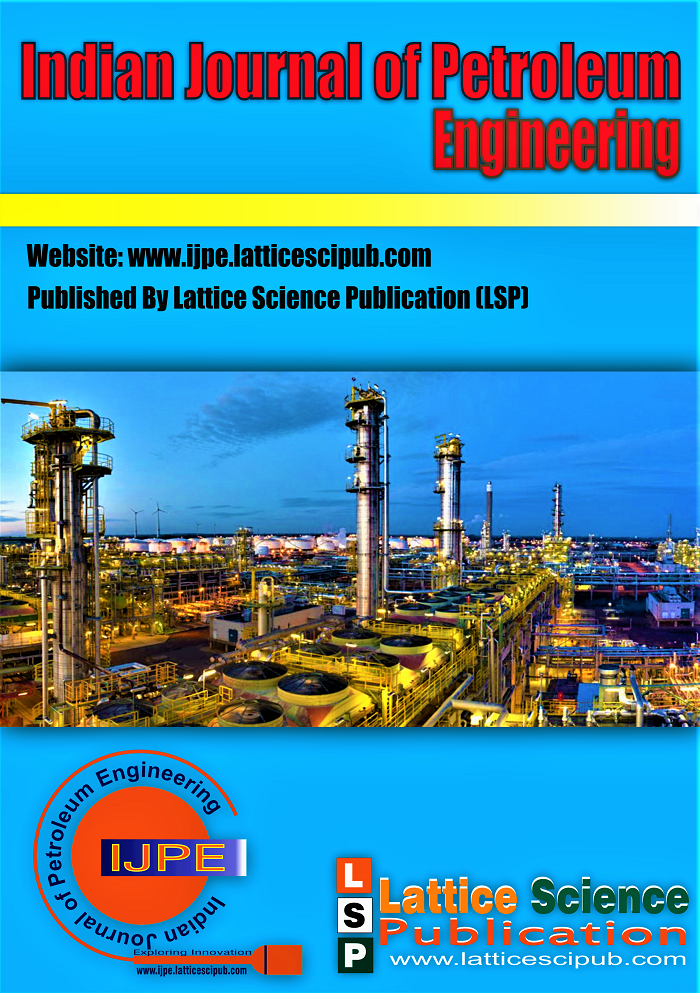Effects of Temperature on Fluid Loss Additive Used in Cement Slurries for Cementation
Main Article Content
Abstract
Studies have shown that the rheology of cement slurries used in oil well cementing operations is a function of temperature, additive type, cement grade, pressure, and concentration of the additives. The cementing operation can directly affect the drilling operations. This study aims to analyze the effect of fluid loss additives on different temperatures and slurry thickening time. Three experiments were conducted by changing the surface temperature of the slurry and the impact of Fluid Loss on thickening time was observed. The first result shows that when the temperature is kept at the standard conditions the thickening time of the slurry was the same as it was designed. The second result of the analysis revealed that when the temperature is increased by 10 degrees Celsius the thickening time of the slurry is increased by more than 3 hours as the fluid loss additive is highly affected by the high temperature and the fluid loss will release the water sooner than the standard design. The third experiment results showed when the slurry temperature was dropped to 18 degrees Celsius the thickening time of the slurry was increased by more than 12 hours due to the effect of temperature on the slurry as the slurry is unable to release the water from the slurry due to fluid loss additive. This study concludes that temperature fluctuations can significantly influence cementing operations and if those are overlooked, may lead to complications in the well. This helps in petroleum testing and fluid mechanics in the oil and gas industry.
Downloads
Article Details

This work is licensed under a Creative Commons Attribution-NonCommercial-NoDerivatives 4.0 International License.
How to Cite
References
Doherty, D.R. et al. 2010. Pushing Cement beyond the Norm of Extreme High Temperature. Paper IADC/SPE 134422 Presented at the IADC/SPE Asia Pacific Drilling Technology Conference and Exhibition International Journal of Engineering Works Vol. 6, Issue 03, PP. 50-70, March 2019 www.ijew.io held in Hochi Minh City, Vietnam, 1-3 November 2010. https://doi.org/10.2118/134422-MS
Haichuan, L., Chengbin, X., Yonghui, G., Lirong, L., Haijin, Z. 2016. Cement Slurries with Rheological Properties Unaffected by Temperature. Paper SPE 178922. https://doi.org/10.2118/178922-PA
Kelessidis, V.C, Fraim, M., Fardis, M., Karakosta, E., Diamantopoulos, G., Arkoudeas, P., ElHardalo, S., Lagkaditi, L., Papavassiliou, G. 2014. Comprehensive Assessment of Additive and Class G Cement Properties Affecting Rheology Fluid Loss, Setting Time and Long-term Characteristics of Elastic Cements. https://doi.org/10.2118/167731-MS
Michaux, M., Nelson, E.B., Vidik, B. 1990. Chemistry and Characterization of Portland Cement in Well Cementing. Elsevier Science Publishers Amsterdam 8-25. Nelson, E. B., and Guillot, D. 2006. https://doi.org/10.1016/S0376-7361(09)70300-0
Okoro, O., Nwakpu, G. 2017. Undergraduate Thesis presented to Department of Petroleum Engineering, Federal University of Technology Owerri. https://doi.org/10.5281/zenodo.2583066.
C.O., A. (2021). High Pressure and High Temperature Wells Cementation using Calcium Oxide Additives: Review. In Indian Journal of Petroleum Engineering (Vol. 1, Issue 1, pp. 1–8). https://doi.org/10.54105/ijpe.a1901.051121
Ramesh, G. (2021). A Study on Strengthening of Concrete Structures. In Indian Journal of Structure Engineering (Vol. 1, Issue 2, pp. 29–32). https://doi.org/10.54105/ijse.b1311.111221
Birthare, A., Pandey, D. M., & Agarwal, S. (2020). Effect on Quality of Cement Mortar by I nclusion of Nano Particle of Zinc Oxide. In International Journal of Innovative Technology and Exploring Engineering (Vol. 9, Issue 5, pp. 5–8). https://doi.org/10.35940/ijitee.e2227.039520
Priya, P. R., & Kannan, Dr. V. (2019). Performance and Micro Structural Analysis of Portland Slag Cement Mortar Induced with Pozzolanic Additives. In International Journal of Recent Technology and Engineering (IJRTE) (Vol. 8, Issue 4, pp. 744–750). https://doi.org/10.35940/ijrte.d7033.118419
H., Prof. A. R. B., & Babu, Dr. D. L. V. (2019). Fresh, Strength and Durability Characteristics of Binary and Ternary Blended Self Compacting Concrete. In International Journal of Engineering and Advanced Technology (Vol. 9, Issue 2, pp. 3987–3991). https://doi.org/10.35940/ijeat.b4540.129219





